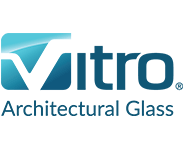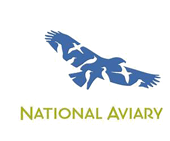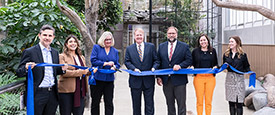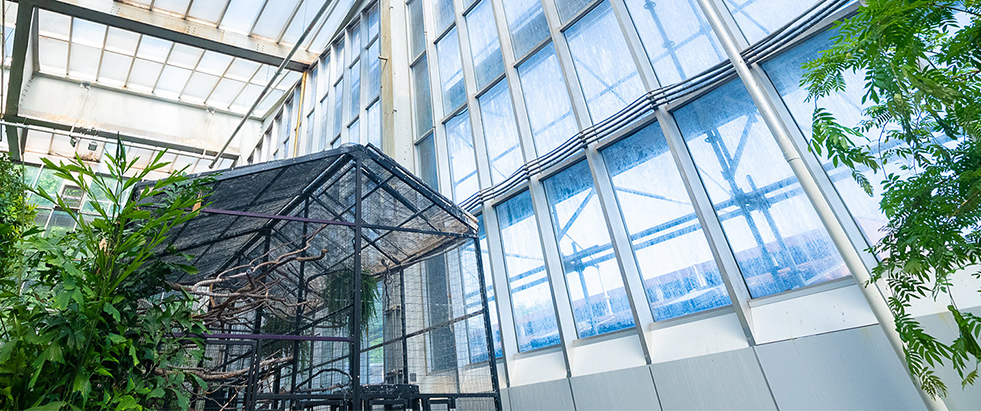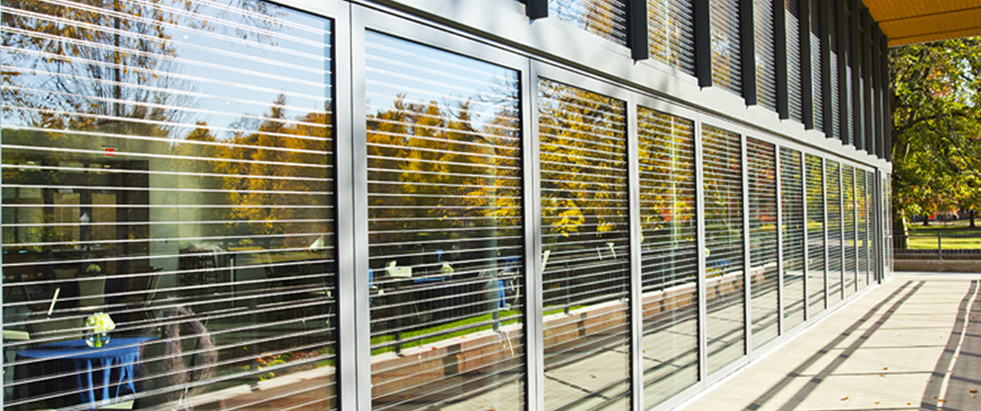Danik Dancause of Walker Glass and Textures explains the science behind bird-friendly glass and why reducing bird collisions with glass is essential.
In 2020, the National Aviary introduced visitors to its newest glass-enclosed event space known as The Garden Room, which is designed to accommodate a variety of gatherings that are traditionally in popular demand at the facility. The Garden Room is especially noteworthy for its wide expanses of AviProtek® E glass by Walker Glass and Textures, the only bird-friendly glass that combines acid-etched visual markers on the first surface of an insulating glass unit (IGU) with Solarban® solar control, low-e coatings by Vitro Architectural Glass on the second surface to create an energy-efficient, bird-safe glazing solution.
Walker Glass and Textures has become an industry leader in producing bird-safe glass product such as AviProtek® E thanks in part to its commitment to studying the science of making glass safer for birds.
“Through our involvement in the glass industry, we heard about birds colliding into glass and we were curious to see if there was anything we could do to help” said Danik Dancause of Walker Glass and Textures. “Through testing products, analyzing results and talking to leading experts in architecture and conservation, we came to understand the challenges and opportunities that bird-safe glass offers.”
When it comes to making glass safe for birds, Dancause explained that the key phrase is “visual marker.”
“No matter which form you’re using, bird-safe glass will have a pattern covering the entire window or glass surface,” he said. “This is what makes bird-safe glass different from regular clear glass, and while Walker Textures produces acid-etched glass, other types of markers can include UV patterns, ceramic frits – anything that creates a contrast.”
Bird-safe glass should follow the “2 by 4 rule,” an industry standard that dictates that visual elements in a bird-safe glass pattern should appear 2 inches apart horizontally or 4 inches apart vertically at minimum. This helps birds “see” the glass as they approach a building.
“The growth of bird-safe glass is mostly coming from legislation,” Dancause said. “If the Bird-Safe Glass Act goes through nationally, it will be a major development.”
Dancause also noted that local legislation and involvement from environmental groups are big factors in choosing bird-safe glass. However, more architects working on specific projects (often universities, for example) are electing to use bird-safe glass, and some firms are even starting to recommend it on their own.
Every project is unique, and Dancause noted that bird-safe glass is more costly than clear glass. However, he also explained that the cost of doing nothing to protect the environment can be damaging.
“A billion birds are injured by glass surfaces every year – that’s a lot of birds,” he said. “It’s affecting our planet and the places we live. There’s a lot of flexibility in bird-safe glass designs that can make them more affordable, including optimizing the glass sheets with low-emissivity coatings to increase performance and save on energy costs.”
Low-e glass products such as Solarban® glass have become the perfect match for bird-safe glass textures like AviProtek® because they protect wildlife while making the buildings they enclose more environmentally friendly, too.
“Having a partner like Vitro enabled us to create the AviProtek® product line,” Dancause said. “We are one of the few who are able to offer a product that meets both the energy goals and the governmental goals of the conservation experts.”
